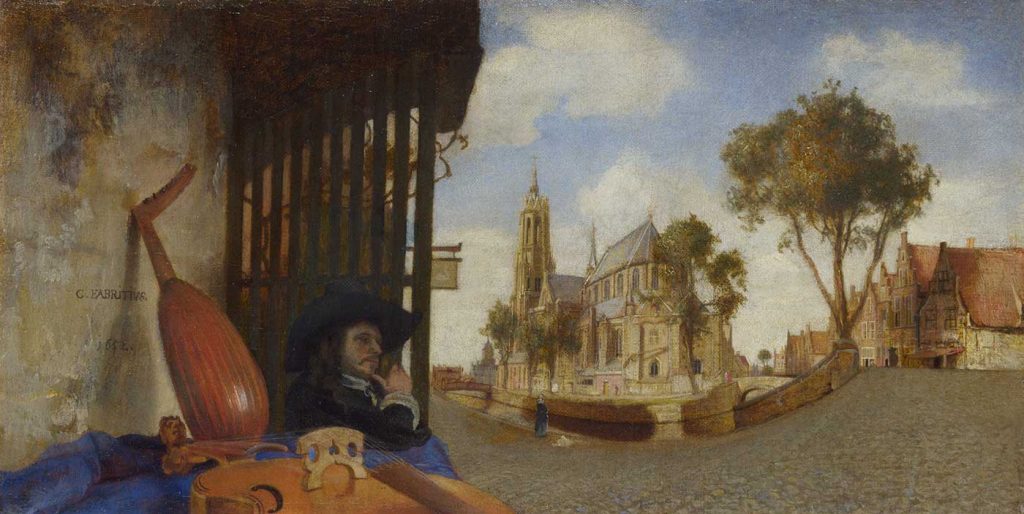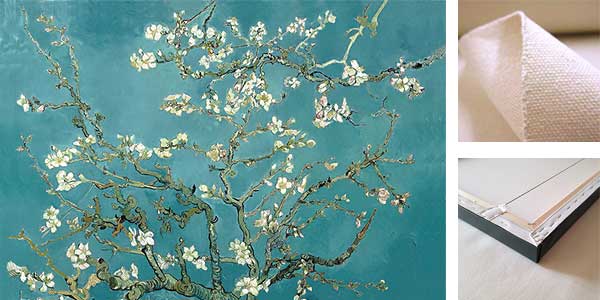
A View of Delft by Carel Fabritius was created in 1652. The painting is in National Gallery, London. The size of the work is 15,5 x 31,7 cm and is made of oil on canvas.
About the Work
This is a very small and very unusual painting, showing a view of the Nieuwe Kerk in Delft as though through a wide-angle lens. We look roughly north-west over a canal from the corner of two streets, the Oude Langendijk and Oosteinde. The grey shape just to the left of the church is the town hall. Both these buildings look much the same today, but the canal has been filled in and the houses on the right have been knocked down.
Views of particular streets and buildings were popular in seventeenth-century Holland, and especially in Delft, where Fabritius worked. The exaggerated perspectives the artist created make this one unusual. The church seems to loom towards us and the bend in the cobbled street seems to reflect the curve of a glass lens.
The effect is most strongly emphasised in the two musical instruments, set out on the table by a man who sits watchfully in the shade. He is probably a maker of, or dealer in, such instruments, and this is his stall. Fabritius may have had an aesthetic appreciation of the shape and form of the instruments, but he also wanted to use them to create a visual illusion. He uses a dramatically foreshortened view along the strings and fingerboard of a violin (or possibly a viola da gamba) so that the instrument appears extremely close to us. Read more in National Gallery, London.
About the Artist
Carel Pietersz. Fabritius (27 February 1622 – 12 October 1654) was a Dutch painter. He was a pupil of Rembrandt and worked in his studio in Amsterdam. Fabritius, who was a member of the Delft School, developed his own artistic style and experimented with perspective and lighting. Among his works are A View of Delft (1652; National Gallery, London), The Goldfinch (1654), and The Sentry (1654).
Carel Pietersz. Fabritius was born in February 1622 in Middenbeemster, a village in the ten-year-old Beemster polder in the Dutch Republic, and was baptized on 27 February of that year. He was the son of Pieter Carelsz., a painter and schoolteacher,[citation needed] and he had two younger brothers, Barent and Johannes, who also became painters. Read more in Wikipedia
Order a reproduction of this work (printed on canvas)
